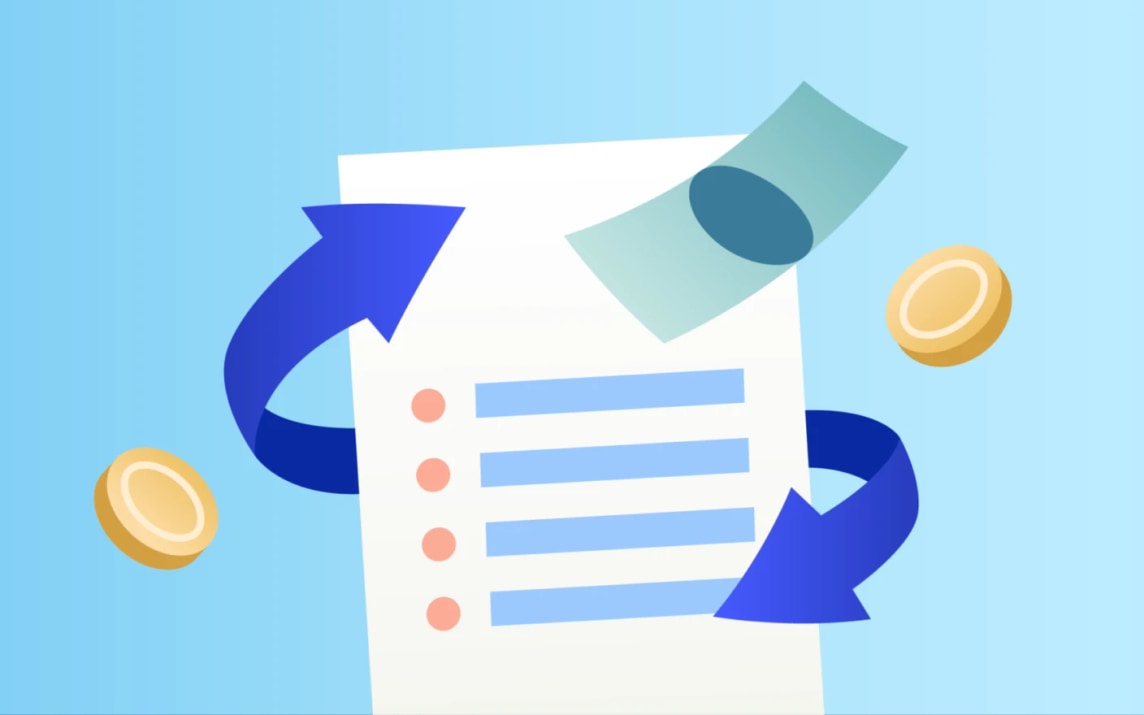A way to access that equity value or lower your debt is through refinancing your mortgage. Refinancing can offer a lower monthly payment or access to cash for larger expenses. While mortgage refinancing has benefits associated with different loan terms, it also comes with a cost.
Should you refinance?
Your financial goals and needs drive the decision of when to refinance. If you’re trying to shorten the loan duration, you can refinance and pay down what you owe faster. If you want to reduce your monthly payment, refinancing makes sense if interest rates have dropped.
Otherwise, if you have a significant cash expense to cover such as home renovations, refinancing allows you to borrow cash from the equity built up in your home or take out a bigger loan. Bear in mind that refinancing also comes at a cost. Similar to when you applied for your original mortgage, you should expect to pay loan application and origination fees, as well as closing costs. You will also owe fees for the credit report, title search, and home appraisal.
Before deciding to refinance, consider whether the overall benefits are greater than the cost. For example, you might weigh whether you’ll save more with a lower interest rate than you’ll pay in refinance closing costs. If you won’t — or home prices are falling and you don’t plan on staying in the house long enough to recoup closing costs — refinancing may not be worth it.
Reasons to refinance your mortgage
Refinancing does not amend or change your current mortgage. Instead, you take out a new mortgage with a new rate and terms that pays off your old one. The modified terms on your new loan can help you save money or get your hands on some extra cash. Consider these common reasons if you’re wondering: when should I refinance my mortgage?
Change your loan term
A popular reason to refinance is to change the length of your loan term. If you want to pay off your mortgage faster, you might refinance for a shorter term. Shorter terms mean you’ll repay your debt more quickly and may even qualify for a lower interest rate. The trade-off is that shorter-term loans also come with higher monthly payments. Review your financial situation to confirm that you can keep up with the new payment schedule. This is where it’s helpful to consult a financial advisor who is familiar with your unique situation.
Refinancing may also be useful if you need help meeting your monthly obligations. By extending the length of your loan, your monthly payment drops. Although lower payments can provide much-needed financial relief in the short term, they can be costly. Not only will you pay more interest over the life of the loan, but you may be hit with a higher interest rate for paying off your mortgage over an extended period.
Lock in a lower interest rate
When interest rates fall, it may be a good time to refinance your mortgage. By refinancing to get a lower rate, you’ll pay less for your home over time. A lower interest rate could also drop your monthly payment, freeing up extra cash in your household budget. Another benefit of locking in a lower interest rate is that more of your monthly payment goes toward the principal, which is the outstanding loan balance. The faster you repay your loan principal, the faster you build home equity.
As long as interest rates have fallen enough to make the closing costs worthwhile, most homeowners choose to refinance to save money over the long run.
Change your loan type: ARM vs. fixed rates
A home loan with a variable interest rate is known as an adjustable-rate mortgage (ARM). The interest rate charged on an ARM stays fixed for a specific time — often three to 10 years. In many cases, the initial rate on an ARM is lower than the going rate for fixed mortgages. But after the fixed period, the interest rate is indexed to market rates, so it can quickly fluctuate up or down. Conversely, a fixed-rate mortgage charges the same interest rate throughout the life of your loan. That means your monthly payments stay the same until your loan is paid off.
If you have an ARM and expect interest rates to rise, consider refinancing to a fixed-rate mortgage to get a better rate. Going from an ARM to a fixed-rate mortgage may be highly desirable if you plan to live in your home for several years. Your monthly payment may go up compared to the ARM mortgage, but it would not fluctuate with market rates.
But if you have a fixed-rate mortgage, you’re locked into the same rate for the duration of your loan. If you don’t plan to stay in your home long-term, or if interest rates are falling, you might refinance to an ARM if rates are lower and you believe they may stay that way.
Pull out equity
Equity is the difference between what your home is worth and how much you owe your lender. As you pay down your loan, the equity in your home rises. The equity in your home may also increase if property values go up.
If your home value is greater than what you owe, refinancing allows you to borrow against your existing equity. Converting your home equity to cash may make sense if you want to make home improvements, pay off debts, or cover unexpected bills. Since a home equity loan is secured by the house, it’s a relatively cheaper form of financing compared to a personal loan.
Cash-out refinance vs. home equity line of credit (HELOC)
Another popular financing option is the Home Equity Line of Credit (HELOC) which allows homeowners to borrow money against the equity built up in their home. The HELOC takes out a second mortgage on the property as a line of credit. You can use that line of credit anytime during the draw period and only pay interest on the funds borrowed. Funds can be used for any purpose, such as home renovations, debt repayment, or emergency expenses. Once the draw period is over, you can’t access any more funds and will need to make monthly payments to cover the principal and interest.
Compared to cash-out refinancing where you pull out equity and usually take on a larger loan, the HELOC gives you more flexibility to decide how much to borrow during the draw period. The HELOC is often used as a source of emergency funds and may also have lower closing costs and fees. However, the rates are usually adjustable variable rates, while cash-out refinancing offers a fixed rate.
How does refinancing work?
Refinancing offers you the opportunity to:
Lower monthly payments
Change the term of your loan
Borrow against your home’s equity
You can also access other types of refinancing, including taking out a new home loan that’s larger than the original mortgage. That might still leave you wondering: When can I refinance my house?
First, you need to qualify for refinancing. Lenders consider your income, debt, credit score, and home equity to determine if you are eligible for refinancing. It doesn’t matter that you qualified for the original mortgage — lenders treat refinancing as a completely new loan.
When you refinance, you take out a new mortgage to pay off the existing one. A refinanced mortgage often has a different interest rate, term, and principal amount than your original loan. However, you are also subject to closing costs and other fees. As such, you will go through many of the same steps as when you first bought your home.
Submit an application
To start, you need to fill out an application. To complete a refinancing application, you provide much of the same information you did when you first bought your home. It’s helpful to have your tax returns and income documentation handy during this process. In addition, your lender may also request verification documents like recent paycheck stubs, bank statements, and W-2s.
Underwriting process
After you submit your application, it goes through the lender's underwriting process.
A mortgage underwriter helps the lender decide whether to refinance your loan. The underwriter verifies your income and employment history and investigates your credit history. They also compare your debts to your income to determine if you can afford the loan.
Underwriters generally order an appraisal to estimate the current value of your home. Before the appraisal, you might complete minor repairs and clean up your home. You can also provide the appraiser with the list of upgrades made since you moved in.
Closing your loan
Once your application has been approved and the underwriting and appraisal process is complete, you can prepare to close your refinance loan. Your lender will provide a Closing Disclosure document, which details the final numbers for your loan.
There are often fewer parties involved when closing a refinanced loan. In some cases — such as if you’re refinancing with the same lender — you may not need an appraisal or the title company to be involved. However, with cash-out refinancing, the process could involve additional parties or steps.
At closing, you’ll review and sign the loan documents. You’ll also need to pay for any closing costs not rolled into your new loan. If you refinance to take out equity in your home, you will receive the funds after you close.
Refinancing your mortgage is not a decision to take lightly, and knowing when it makes sense depends on your financial situation. Failing to weigh the situation from all sides can result in owing more money on your home long-term. At times, you may be willing to pay more for access to cash, but you’ll need to analyze the situation carefully to see if it’s worthwhile.
You don’t have to go through the refinancing process alone. FinanceHQ can match you with a financial advisor to help you navigate the process, make sound financial decisions, and avoid costly mistakes!

